-
 Bitcoin
Bitcoin $107,352.1067
0.28% -
 Ethereum
Ethereum $2,429.3531
-0.90% -
 Tether USDt
Tether USDt $1.0001
-0.02% -
 XRP
XRP $2.1894
4.62% -
 BNB
BNB $646.7968
0.36% -
 Solana
Solana $147.4290
4.03% -
 USDC
USDC $0.9998
-0.02% -
 TRON
TRON $0.2756
1.52% -
 Dogecoin
Dogecoin $0.1630
1.14% -
 Cardano
Cardano $0.5612
1.18% -
 Hyperliquid
Hyperliquid $37.0580
-0.05% -
 Bitcoin Cash
Bitcoin Cash $496.9410
-0.09% -
 Sui
Sui $2.7318
3.19% -
 Chainlink
Chainlink $13.1503
0.58% -
 UNUS SED LEO
UNUS SED LEO $9.0766
0.55% -
 Avalanche
Avalanche $17.7220
1.46% -
 Stellar
Stellar $0.2380
1.52% -
 Toncoin
Toncoin $2.8439
0.38% -
 Shiba Inu
Shiba Inu $0.0...01143
1.84% -
 Litecoin
Litecoin $85.8053
1.47% -
 Hedera
Hedera $0.1483
2.70% -
 Monero
Monero $314.3240
2.12% -
 Bitget Token
Bitget Token $4.6725
0.77% -
 Dai
Dai $1.0000
0.00% -
 Polkadot
Polkadot $3.3555
1.28% -
 Ethena USDe
Ethena USDe $1.0001
0.02% -
 Uniswap
Uniswap $7.0890
2.64% -
 Pi
Pi $0.5355
-3.40% -
 Pepe
Pepe $0.0...09393
1.06% -
 Aave
Aave $256.8136
-1.90%
What is Flash Mint?
Flash minting, a DeFi technique, involves instantly creating and using tokens within a single blockchain transaction for arbitrage or borrowing, but carries high risks like reentrancy attacks and market volatility, demanding expert knowledge.
Mar 11, 2025 at 05:15 am
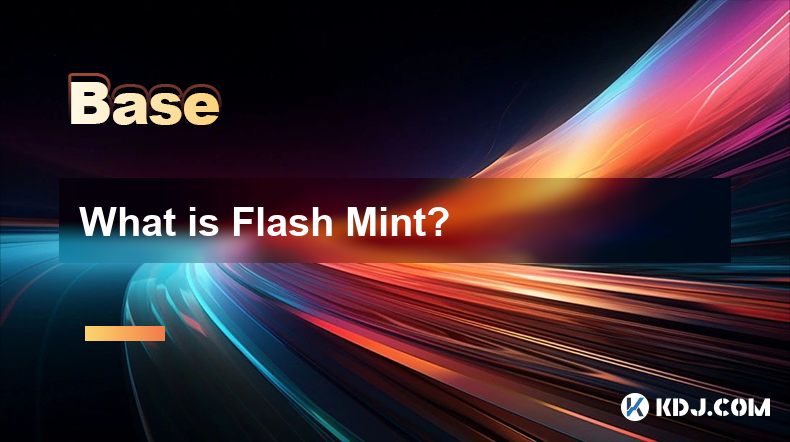
Key Points:
- Flash minting is a process where new tokens are created and instantly used in a decentralized finance (DeFi) transaction, typically within a single block.
- It's often used to exploit arbitrage opportunities or to borrow assets without providing collateral.
- This process relies heavily on the speed and efficiency of the blockchain network.
- While offering lucrative opportunities, it also carries significant risks, especially concerning reentrancy attacks and liquidation.
- Understanding the mechanics and risks is crucial before attempting flash minting.
What is Flash Mint?
Flash minting, in the context of decentralized finance (DeFi), refers to a technique where new tokens are minted and immediately used within a single blockchain transaction. This transaction is atomic; meaning it either completes entirely or not at all. If any part of the transaction fails, the entire operation is reversed, leaving the blockchain unchanged. This is crucial because it prevents malicious actors from exploiting the system by only partially completing a transaction.
The core concept revolves around leveraging the speed and atomicity of blockchain transactions. A smart contract is programmed to mint new tokens, utilize these tokens to execute a specific action (like arbitrage or borrowing), and then burn (destroy) the newly minted tokens, all within the same block. This swift execution is vital to the success of the strategy.
How Does Flash Minting Work?
Flash minting's effectiveness stems from its integration with decentralized exchanges (DEXs). The process typically involves interacting with a DEX's liquidity pools. The smart contract interacts with the DEX, minting new tokens, using them to exploit price discrepancies between different exchanges or borrowing against them, and then repaying the loan or closing the arbitrage position, all within a single block. The entire process is executed atomically; failure at any stage results in the entire transaction being reverted.
- The smart contract interacts with a DEX's liquidity pool.
- New tokens are minted.
- The minted tokens are used to execute a profitable action (e.g., arbitrage or borrowing).
- The minted tokens are burned.
- The profits are collected.
The speed of execution is paramount. If the transaction takes longer than one block, the price discrepancies or lending opportunities might vanish, rendering the entire operation unprofitable. This requires a sophisticated understanding of blockchain technology and smart contract programming.
Flash Minting and Arbitrage
One primary use case for flash minting is arbitrage. Arbitrage involves exploiting price differences for the same asset across different exchanges. Flash minting allows for the instantaneous purchase of an asset on one exchange at a lower price, the simultaneous sale of the same asset on another exchange at a higher price, and the capturing of the price difference as profit—all within a single transaction. The speed provided by flash minting is crucial, as price discrepancies are often short-lived.
Consider a scenario where Token X trades at $10 on Exchange A and $11 on Exchange B. A flash mint contract could mint new tokens, buy Token X on Exchange A, sell it on Exchange B, and then burn the minted tokens, pocketing the $1 profit per token. The atomicity ensures that if the sale on Exchange B fails, the purchase on Exchange A is also reverted.
Flash Minting and Lending
Flash loans are another application of flash minting. These loans allow borrowing large sums of cryptocurrency without providing any collateral. The loan is repaid within the same transaction, making it a zero-risk loan for the lender. However, the borrower needs to execute a profitable transaction within the same block to repay the loan and generate a profit. This high-risk, high-reward strategy requires precise planning and execution.
The risk here lies in the complexity of the transaction. If the borrower fails to execute a profitable trade or faces unforeseen circumstances, the loan repayment will fail, and the entire transaction will be reverted. This could result in significant losses for the borrower if they're unable to repay the loan outside of the flash loan transaction.
Risks Associated with Flash Minting
While flash minting offers lucrative opportunities, it carries substantial risks. One significant risk is the possibility of reentrancy attacks. A reentrancy attack occurs when a malicious contract repeatedly calls back into the flash minting contract, depleting its resources or causing unexpected behavior. This requires sophisticated security measures to prevent such attacks.
Another significant risk is the volatility of cryptocurrency markets. Even with the speed of flash minting, unexpected market fluctuations could wipe out profits or even lead to losses. Furthermore, the complexity of smart contracts increases the likelihood of unforeseen bugs or vulnerabilities that could lead to financial losses. A thorough understanding of smart contracts and blockchain technology is essential to mitigate these risks.
Common Questions and Answers:
Q: Is flash minting legal?
A: The legality of flash minting depends on the jurisdiction and how it's used. It's a technical tool, and its legality is determined by the application. Using it for illicit activities like money laundering would be illegal.
Q: Is flash minting profitable?
A: Flash minting can be profitable if executed correctly, exploiting arbitrage or efficient lending strategies. However, it's a high-risk, high-reward strategy and requires expertise and careful planning.
Q: How can I learn more about flash minting?
A: Start by learning about smart contracts, blockchain technology, and decentralized finance (DeFi). Explore online resources, tutorials, and courses focusing on these areas. Research specific examples of flash minting implementations on various blockchains.
Q: What are the security implications of flash minting?
A: Flash minting involves significant security risks, including reentrancy attacks, vulnerabilities in smart contracts, and market volatility. Thorough auditing of smart contracts and careful risk management are essential.
Q: What programming languages are commonly used in flash minting?
A: Solidity is the most prevalent language for developing smart contracts used in flash minting, given its widespread adoption in Ethereum and compatible blockchains.
Q: Can anyone use flash minting?
A: While the technology is publicly accessible, successfully implementing flash minting requires advanced programming skills, a deep understanding of DeFi protocols, and significant technical expertise. It's not a beginner-friendly activity.
Disclaimer:info@kdj.com
The information provided is not trading advice. kdj.com does not assume any responsibility for any investments made based on the information provided in this article. Cryptocurrencies are highly volatile and it is highly recommended that you invest with caution after thorough research!
If you believe that the content used on this website infringes your copyright, please contact us immediately (info@kdj.com) and we will delete it promptly.
- RUVI Token Soars: Can It Eclipse Cardano's Forecast?
- 2025-06-29 02:30:12
- Meme Coin Mania: Can Little Pepe Outshine Shiba Inu and Dogecoin?
- 2025-06-29 02:30:12
- XRP Tokens: Navigating Financial Status and the Art of Buying In
- 2025-06-29 02:50:12
- Shiba Inu, Trump Coin, and the Crypto Bull Run: What's the Deal?
- 2025-06-29 03:50:12
- Coinbase on the 2025 List of Influential Companies: A Crypto Powerhouse?
- 2025-06-29 04:10:12
- Solana, Shiba Inu, and Pepe Coin: What's Hot and What's Not in the Crypto World
- 2025-06-29 03:55:13
Related knowledge
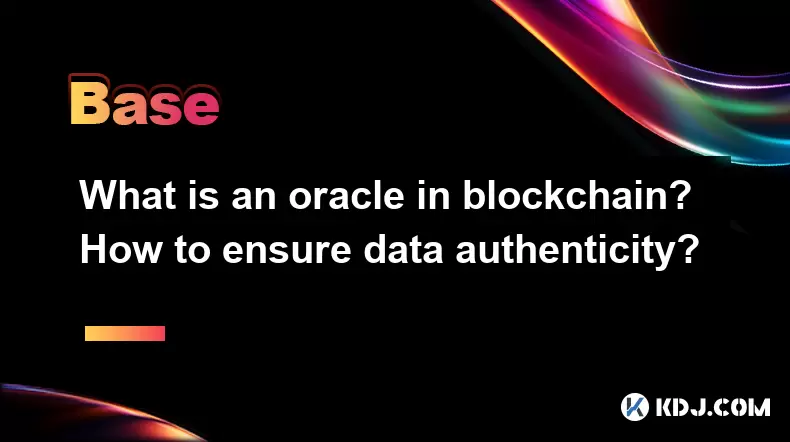
What is an oracle in blockchain? How to ensure data authenticity?
Jun 19,2025 at 08:49pm
Understanding the Role of an Oracle in BlockchainIn the context of blockchain technology, an oracle serves as a bridge between the blockchain and external data sources. While blockchains are inherently secure and decentralized, they cannot access real-world information on their own. Oracles enable smart contracts to interact with off-chain data such as ...
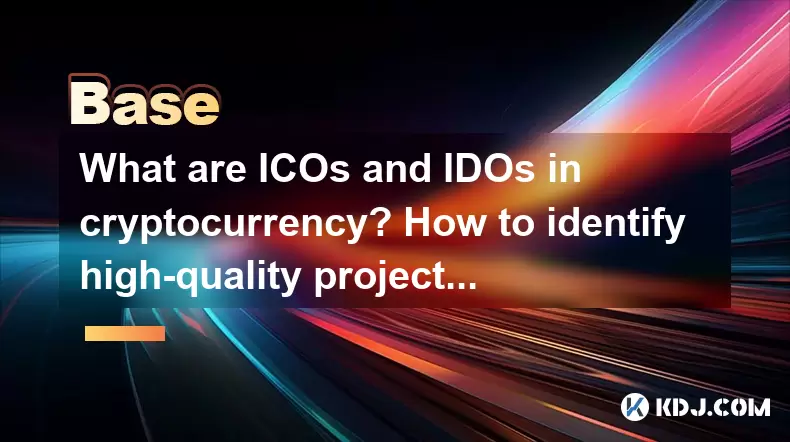
What are ICOs and IDOs in cryptocurrency? How to identify high-quality projects?
Jun 22,2025 at 11:49am
Understanding ICOs in CryptocurrencyInitial Coin Offerings (ICOs) are fundraising mechanisms used by cryptocurrency startups to raise capital for their projects. In an ICO, a company creates and sells its own tokens to investors in exchange for established cryptocurrencies like Bitcoin or Ethereum. The process typically involves the release of a whitepa...
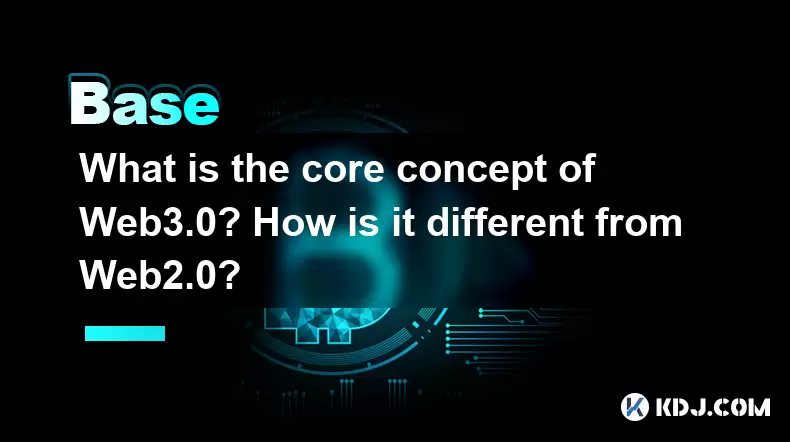
What is the core concept of Web3.0? How is it different from Web2.0?
Jun 21,2025 at 05:56pm
Decentralization as the Foundation of Web3.0The core concept of Web3.0 revolves around decentralization, which fundamentally challenges the centralized architecture of Web2.0. In Web3.0, control and ownership are distributed across a network rather than being held by a central authority or corporation. This is achieved primarily through blockchain techn...
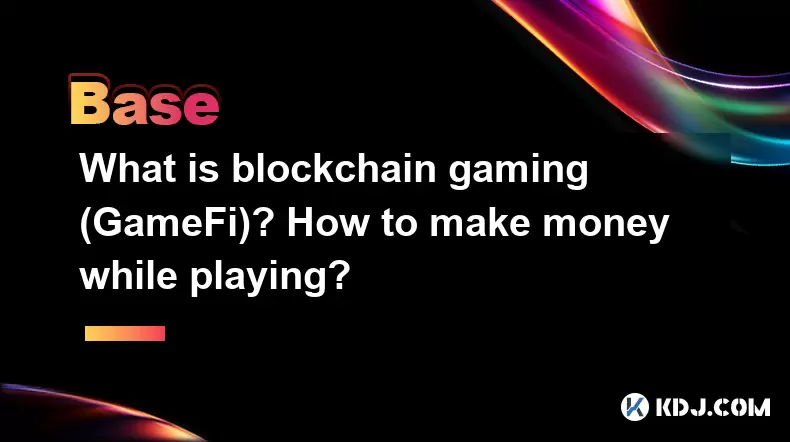
What is blockchain gaming (GameFi)? How to make money while playing?
Jun 20,2025 at 07:56am
Understanding Blockchain Gaming (GameFi)Blockchain gaming, often referred to as GameFi, is a fusion of blockchain technology and video games. It enables players to own in-game assets through non-fungible tokens (NFTs) and earn rewards via cryptocurrencies or token-based systems. Unlike traditional games where items are controlled by centralized develope...
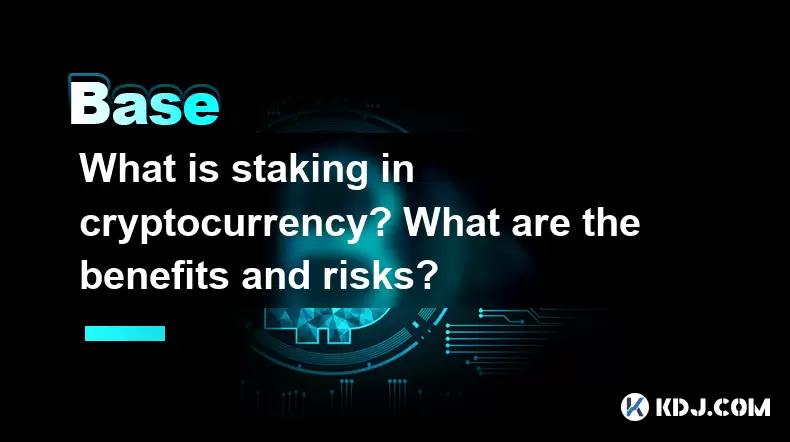
What is staking in cryptocurrency? What are the benefits and risks?
Jun 22,2025 at 10:01am
Understanding the Concept of Staking in CryptocurrencyStaking in cryptocurrency refers to the process of actively participating in transaction validation on a blockchain network that uses a Proof-of-Stake (PoS) consensus mechanism. Instead of miners competing to solve complex mathematical puzzles as in Proof-of-Work systems like Bitcoin, PoS blockchains...
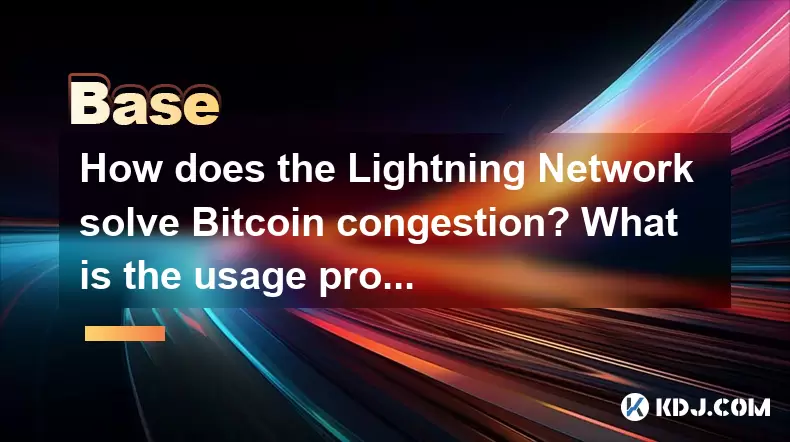
How does the Lightning Network solve Bitcoin congestion? What is the usage process?
Jun 23,2025 at 06:21pm
Understanding Bitcoin Network CongestionBitcoin, as a decentralized digital currency, operates on a blockchain that records every transaction in a public ledger. Each block has a limited size, typically 1 megabyte, which allows for only a certain number of transactions per second (TPS). When the number of transactions increases, the network becomes cong...

What is an oracle in blockchain? How to ensure data authenticity?
Jun 19,2025 at 08:49pm
Understanding the Role of an Oracle in BlockchainIn the context of blockchain technology, an oracle serves as a bridge between the blockchain and external data sources. While blockchains are inherently secure and decentralized, they cannot access real-world information on their own. Oracles enable smart contracts to interact with off-chain data such as ...

What are ICOs and IDOs in cryptocurrency? How to identify high-quality projects?
Jun 22,2025 at 11:49am
Understanding ICOs in CryptocurrencyInitial Coin Offerings (ICOs) are fundraising mechanisms used by cryptocurrency startups to raise capital for their projects. In an ICO, a company creates and sells its own tokens to investors in exchange for established cryptocurrencies like Bitcoin or Ethereum. The process typically involves the release of a whitepa...

What is the core concept of Web3.0? How is it different from Web2.0?
Jun 21,2025 at 05:56pm
Decentralization as the Foundation of Web3.0The core concept of Web3.0 revolves around decentralization, which fundamentally challenges the centralized architecture of Web2.0. In Web3.0, control and ownership are distributed across a network rather than being held by a central authority or corporation. This is achieved primarily through blockchain techn...

What is blockchain gaming (GameFi)? How to make money while playing?
Jun 20,2025 at 07:56am
Understanding Blockchain Gaming (GameFi)Blockchain gaming, often referred to as GameFi, is a fusion of blockchain technology and video games. It enables players to own in-game assets through non-fungible tokens (NFTs) and earn rewards via cryptocurrencies or token-based systems. Unlike traditional games where items are controlled by centralized develope...

What is staking in cryptocurrency? What are the benefits and risks?
Jun 22,2025 at 10:01am
Understanding the Concept of Staking in CryptocurrencyStaking in cryptocurrency refers to the process of actively participating in transaction validation on a blockchain network that uses a Proof-of-Stake (PoS) consensus mechanism. Instead of miners competing to solve complex mathematical puzzles as in Proof-of-Work systems like Bitcoin, PoS blockchains...

How does the Lightning Network solve Bitcoin congestion? What is the usage process?
Jun 23,2025 at 06:21pm
Understanding Bitcoin Network CongestionBitcoin, as a decentralized digital currency, operates on a blockchain that records every transaction in a public ledger. Each block has a limited size, typically 1 megabyte, which allows for only a certain number of transactions per second (TPS). When the number of transactions increases, the network becomes cong...
See all articles

























































































